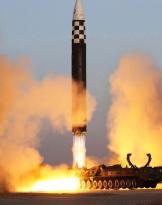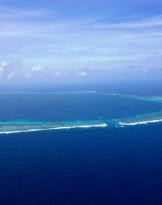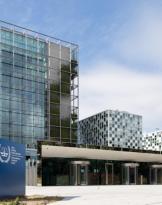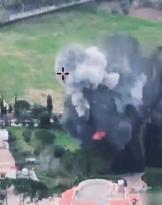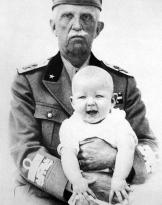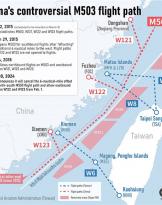Following the explosive statements announced yesterday at the UN General Assembly by US President Donald Trump regarding the Korean crisis, Japanese Prime Minister Shinzo Abe has pronounced himself declaring that the final decision on Korea "rests [in any case] with General Mattis. ”, With the slight relief of those who feared and fear the figure of Donald Trump in the role of Commander in Chief.
But who is General James Norman Mattis?
The former four-star Marine Corps General Secretary (USMC) today secretary of Trump Presidency Defense, was born in Pullman, Washington, in the 1950 and is nicknamed by its marines Mad Dog ("mad Dog").
A graduate of the National War College, he received a BA in History from Central Washington University. Enlisted in the United States Marine Corps until reaching the highest rank in which he retired to be chosen by the most unexpected president in the history of America for one of the most delicate roles in US governance, Mattis is described as a man of enviable culture.
Her mother worked in intelligence during World War II and her father took part in the Project Manhattan (the American nuclear program that led to Hiroshima and Nagasaki)
 He always put 'boots on the ground' with his men: The Gulf War in 91, Afghanistan in 2001, was under the command of marine expeditionary force with the 1st marine division during the invasion of 2003 Iraq.
He always put 'boots on the ground' with his men: The Gulf War in 91, Afghanistan in 2001, was under the command of marine expeditionary force with the 1st marine division during the invasion of 2003 Iraq.
In 2007 he is appointed commander of the NATO Supreme Allied Command Transformation, then at the top of the United States Joint Forces Command until he took up the post of General David H. Petraeus.
Charismatic man of action, brooding reader of Marcus Aurelius' 'memoirs' in his camp tent - with a sand floor - of Saddam Hussein's Iraq, Jim Mattis is the man who is responsible for the signature - according to most in Washington - to sign the military option that in the event of an escalation should silence what President Trump publicly renamed the 'Rocket Man' yesterday at the United Nations - the North Korean dictator Kim Jong-un, the man who, despite repeated sanctions and discouragement by the United States, has conducted fifteen ballistic tests of IRBM (intermediate-range ballistic missile), alleged ICBM (intercontinental ballistic missile) and 'dirty' bombs in the last year in the continuation of a nuclear program that aims to the H bomb (hydrogen thermonuclear bomb).
The other key men
Currently others key-men of the American armed forces in the White House on which the Commander in Chief Trump can rely on "totally destroying North Korea" are:
John F. Kelly: Also from the Marine Corps, tactical teacher, strategy and advanced war in the Quantico base, twice in Iraq, now head of the White House staff;
HR McMaster, graduated at the Military Academy of West Point - the world's most prestigious military school - then the Gulf War, Afghanistan, Iraq, today a National Security Adviser;
the 'diplomat' Chief of Staff Joseph F. Dunford, head of the Joint Staff, also of the Marine Corps, dubbed 'Fighting Joe' (twice Iraq and Afghanistan) was the former head of the Obama Democratic Presidency . He is not described as a 'war hawk': during his last visit to South Korea, where he met Prime Minister Moon Jae-in, he did not mention the "fire and fury" statements made by President Trump after the mid-August ballistic tests. , but focused his statements on 'diplomatic and economic pressure' to achieve the denuclearization of Pyonyang.

The multiplied 'military option'
The military option considered by the US tops in the event of a preventive attack would materialize by employing asset low observability and cruise missiles launched by surface and submarine units crossing in the Pacific. This would result in a 'shower of fire' carried by 'Tomahawk' cruise missiles launched by submarines and missile cruisers - which we have already seen employed without risk of an effective response - in Syria, and by strategic bombers with stealth capabilities such as the B -2 sprit and the B-1 Lancer.
The main goal is all the North Korean ballistic missile launch sites identified to date to undo the retaliation risk Pyongyang would resort to.
This 'option', which would base its success on the certainty of a substantial North Korean air defense, should in any case take into account the security of the information provided by intelligence on the targets, since North Korea, largely crossed by unknown mountainous areas could prove to be a constellation of occult military sites.

(photo: US DoD / KCNA)


